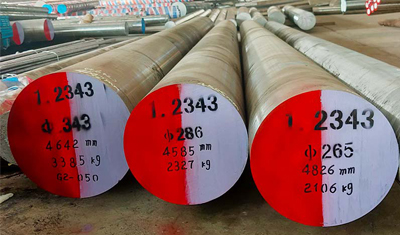Tel.: +86 714 3703 589 E-mail: [email protected]
As the hot work tool steel is used in different environments (usage, temperature, pressure, atmosphere), the pressure on the mold is also different. In order to reduce the melt loss of the casting mold, it is not enough to improve the performance of the tool steel, but also needs to improve the surface treatment technology. In order to improve the service life of the mold, the tool steel should be selected according to the use environment and process design, such as
Hot forging die and casting die are in direct contact with the processed material at high temperatures, softening the die surface and decreasing the die surface strength. In addition, under the action of forming pressure and thermal stress, the die surface is prone to cracking and bonding, which affects the appearance of the processed workpiece. Therefore, the requirement for tool steel is to inhibit high-temperature softening and maintain the strength of the steel (resistance to softening).
The secondary carbide of the hot work tool steel after tempering plays an important role in improving the softening resistance of the steel. the addition of alloying elements such as Mo, W, V, etc. has a good effect on improving the softening resistance. But too many alloying elements will lead to composition segregation and carbide increase, resulting in a decline in toughness. Therefore, hot work tool steel must have both softening resistance and toughness.

Hot Work Tool Steel
Hot work tool steel molds, especially cast molds that require a flawless appearance of the workpiece, often suffer from thermal cracking. These tortoise cracks expand and grow during the use of the mold, leading to cracking. The causes of hot cracks are: the mold surface is softened by the heat of the processed workpiece, the mold is in contact with the atmosphere causing oxidation inside existing cracks, and repeated heating causes local expansion and contraction. Cooling heat cycle to promote crack expansion. In order to inhibit the occurrence of thermal cracking, should improve the tool steel high temperature strength (softening resistance) and toughness.
Melt damage is a special form of damage to the casting mold. Ejected aluminum and magnesium and mold material reaction, so that the mold surface alloying, resulting in mold wear and thermal bonding. This phenomenon is called melt loss. An effective way to prevent melt damage is to avoid contact of liquid aluminum with liquid magnesium and iron (the main components of the mold material). Diffusion treatment including sulfur nitriding and coating treatment (PVD, CVD) surface treatment is the most effective method.
Previous: None